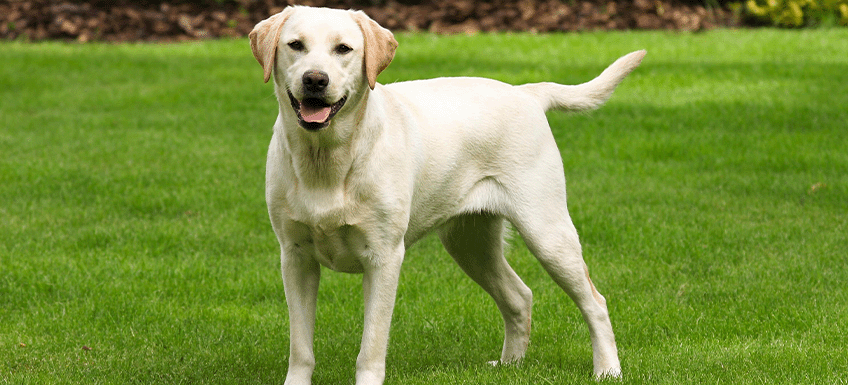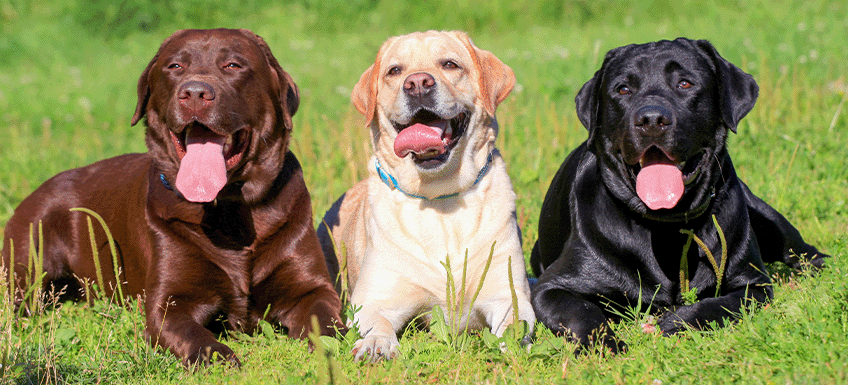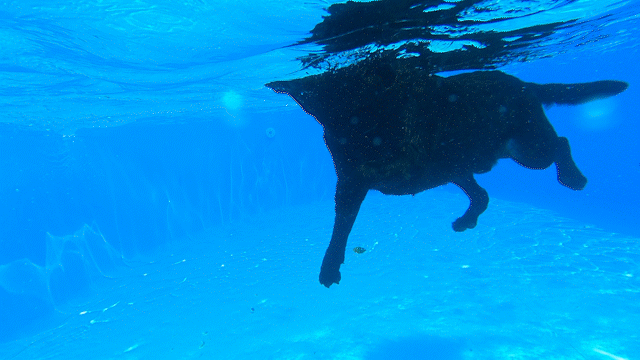
Labrador Retriever
Kid Friendly
Affectionate
High Energy
Cat Friendly
Sociable
Easy to Train
Breed Snapshot:
- Weight: 25 - 36 kgs
- Height: 54 - 62 cm
- Breed Size: Medium
- Lifespan: 12-15 years
- Dog Breed Group: Sporting
- Shed Level: Medium
- Coat Type: Dense and Waterproof
Description
The Labrador Retriever is one of the most popular breeds of dogs in the world, known for its friendly, outgoing, and high-energy personality. Originally bred for hunting and retrieving, Labs are now commonly used as guide dogs, search-and-rescue dogs, and as loving family pets.

Labradors come in three different colours; black, chocolate, and yellow.
Characteristics
Labs are known for their friendly, outgoing, and energetic personalities. They are often described as "the ultimate family dog" because they love people, especially children, and are eager to please their owners. Labs are intelligent and eager to learn, which makes them highly trainable. They are also very active dogs that require plenty of exercise and playtime to stay happy and healthy.
Exercise
This breed is highly trainable and responds well to positive reinforcement techniques. Basic obedience training is essential, and early socialisation is also important to help them get along with other dogs and people. In addition to training, Labs require plenty of exercise to keep them physically and mentally stimulated. This breed is a high-energy breed, so they need at least an hour of vigorous exercise each day, such as running, fetching, or playing in the backyard.
Health Problems
While labs are normally robust dogs, they can be susceptible to some health problems:
- Obesity: Labs are notorious for their love of food and can easily become overweight or obese. This can lead to a variety of health problems, such as joint pain and heart disease.
- Hip dysplasia: This condition affects the hip joint and can cause pain and mobility issues in Labs. Large and active breeds like Labs can be prone to hip dysplasia.
- Laryngeal paralysis: Labs, like other large breeds, can develop this condition which causes difficulty breathing due to paralysis of the larynx.
- Progressive retinal atrophy: This inherited eye disorder can cause gradual vision loss and eventual blindness in Labs.
- Hypothyroidism: This condition occurs when the thyroid gland doesn't produce enough thyroid hormone. Symptoms can include weight gain, lethargy, and skin problems.
Many of these health issues in Labs can be avoided or managed with regular veterinary checkups, a balanced diet, and some exercise
Grooming
Labrador Retrievers have a short, dense, water-resistant double coat that sheds moderately throughout the year, but heavily during seasonal shedding periods. They do not require haircuts or trimming, but regular brushing is essential to maintain their coat's health and shine.
Regular brushing will help to remove loose hair, dirt, and debris, preventing mats and tangles from forming. This can be done with a slicker brush, which is designed to get through the coat's thick fur without harming the dog's skin.
Living Environment
Labs are highly adaptable and can live in a variety of living conditions, from apartments to large homes with plenty of space. However, they are high-energy dogs that need plenty of exercise, so a large, securely fenced yard is ideal for this breed.
Labrador FAQs
What is a labrador retriever?
Labrador Retrievers are known for their friendly, outgoing personalities and make excellent family pets. They are typically medium to large in size, with a muscular build, and come in three colours: black, yellow, and chocolate.
What is the difference between a labrador and a golden retriever?
Labrador Retrievers and Golden Retrievers are two of the most popular dog breeds in the world, and they share many similarities. However, there are some differences between the two breeds, one major difference being their appearance. While both breeds are medium to large and have a muscular build, Golden Retrievers are generally slightly larger than Labrador Retrievers. Golden Retrievers have a longer, flowing coat that is typically golden in colour, while Labradors have a shorter coat that can come in black, yellow, or chocolate.
When is a labrador fully grown?
Labradors are usually considered fully grown when they reach about 12 to 18 months old. But, they may keep growing and developing mentally and physically for up to two years. During this time, they could get bigger, gain more muscles, and get better at moving and thinking. It's important to take good care of them with the right food, exercise, and training during this time to make sure they grow up healthy and happy.
Did you know…

…That Labradors have webbed toes? That's right, they're basically part-duck! This unique feature makes them excellent swimmers and retrievers.